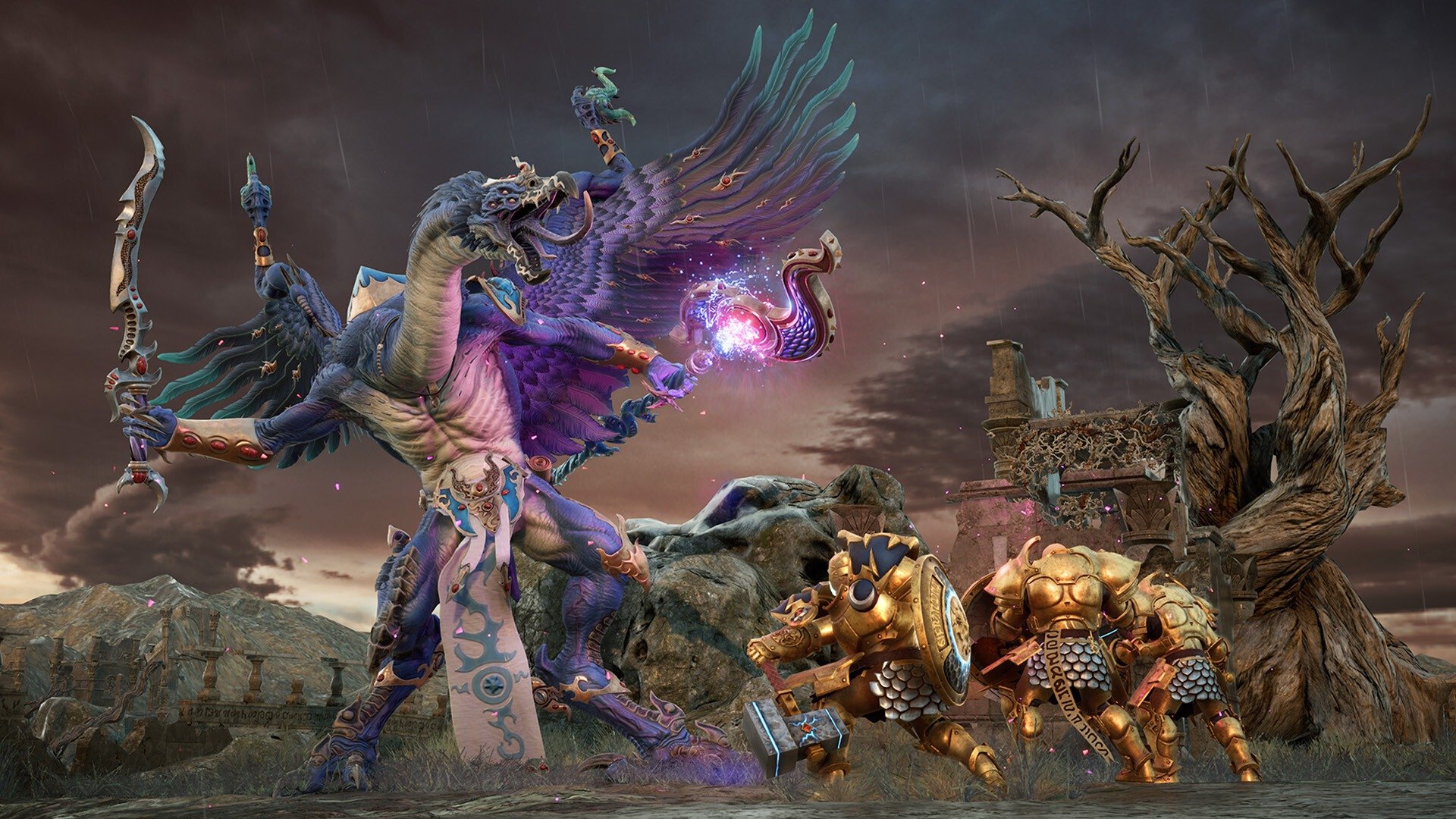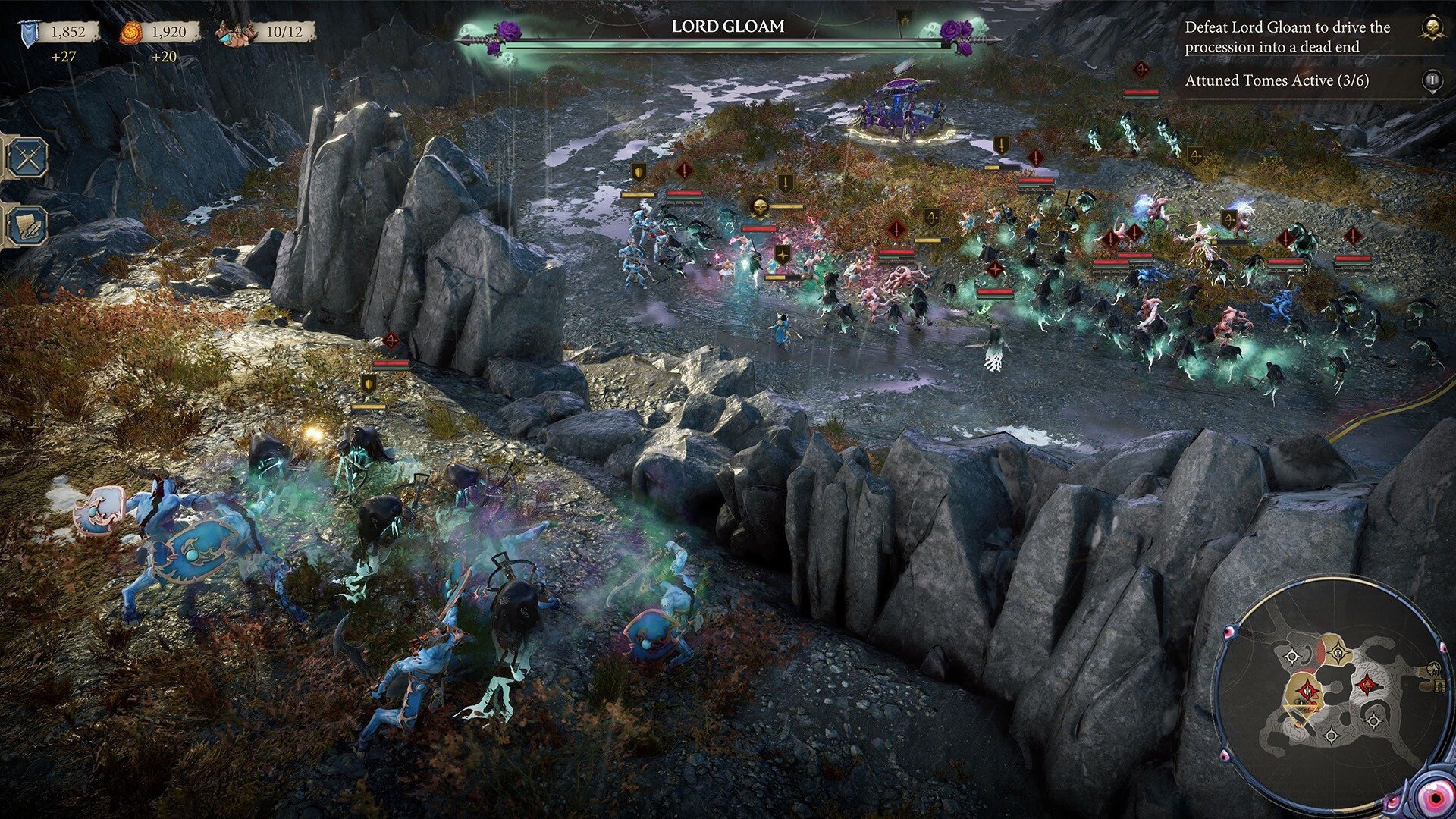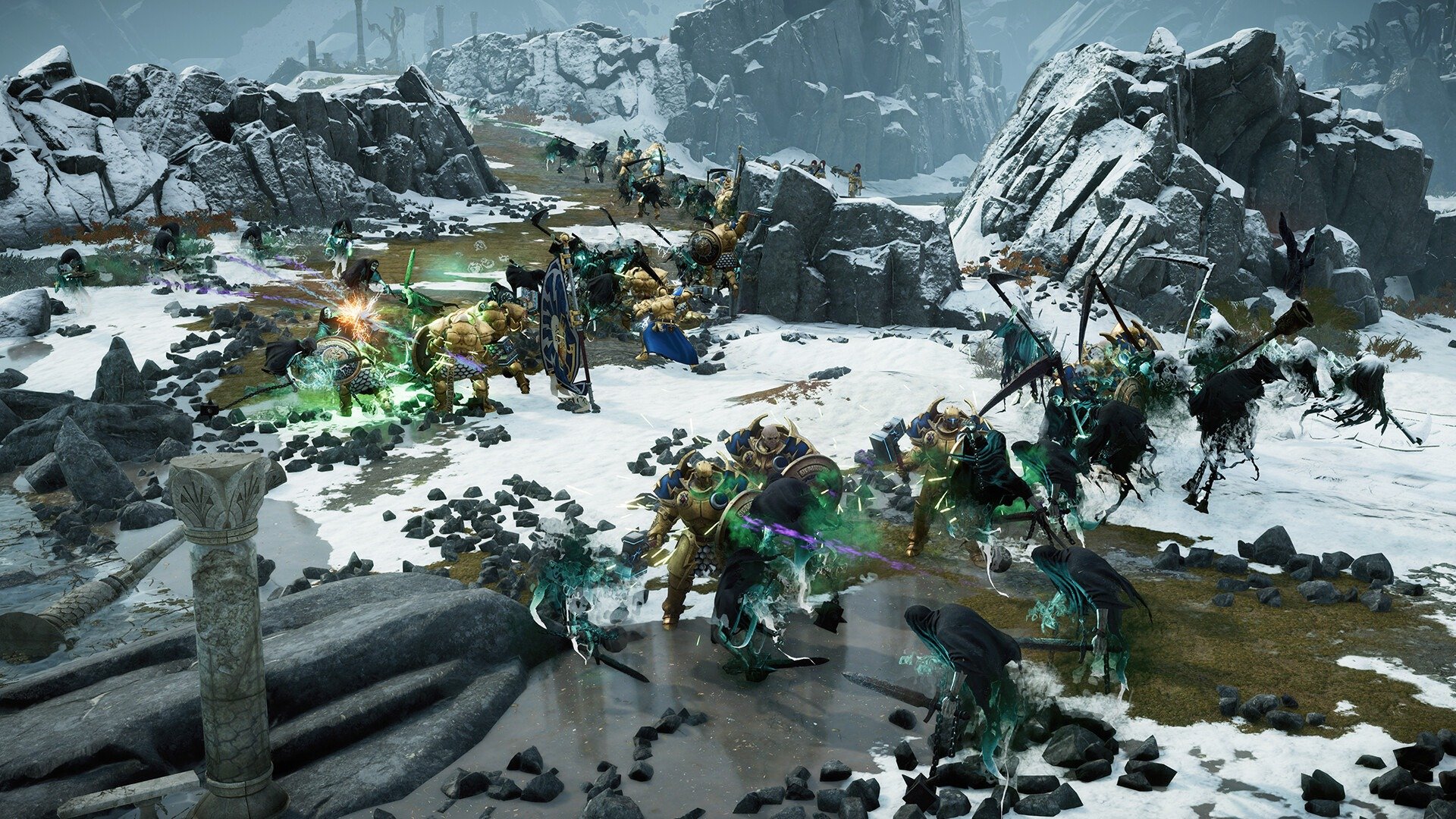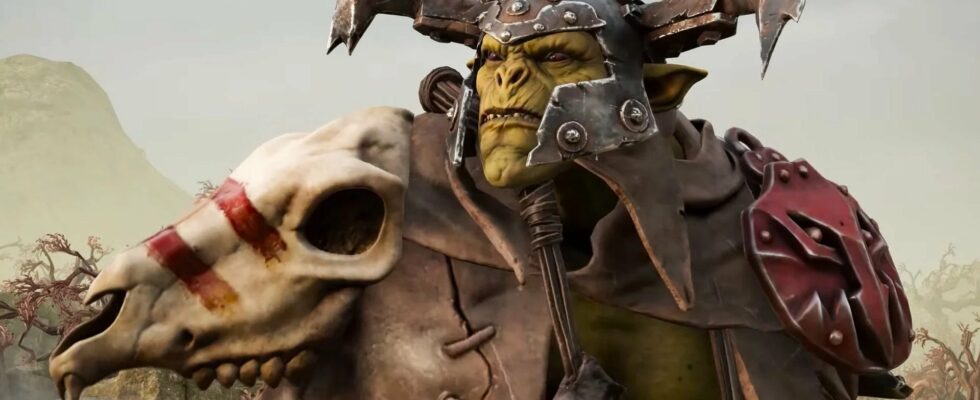For many years, Warhammer games have been legion. Amidst this plethora of offerings, the quality varies greatly. It is therefore with a certain reservation that we explored this new opus of Warhammer Age of Sigmar, even if we had a favorable first impression during our preview a few weeks ago.
The Warhammer Age Of Sigmar universe may seem complex at first glance. Remember that Age of Sigmar revitalized the Warhammer Fantasy universe in 2015 by introducing a more mystical high fantasy setting. In Age of Sigmar, the previous worlds of Warhammer Fantasy were wiped out by the apocalypse called the End Times. The game is therefore set in the Mortal Realms, a new set of magical worlds connected by cosmic portals. Realms of Ruin is the first (big budget) real-time strategy game to explore this universe specifically. How it works ?
What is the principle of the game?
Realms of Ruin is a real-time strategy game, reminiscent of Warhammer 40,000: Dawn of War, but it is notable for its lack of base building and resource gathering. Instead, players seek to control Arcane portals that generate the resources needed to train and upgrade their troops. Victory is achieved by dominating more Victory Points than the opponent or by annihilating their base. The game is primarily based on combat.
The game’s units are classified into offensive, defensive, ranged, and heroic categories. Each type has special abilities, consuming resources and subject to cooldowns. It is important to note that units remain in combat until defeated or a retreat option is used. The game requires juggling multiple fronts, managing resources and developing units. This concept, although simple in theory, proves intense and sometimes stressful in practice.
In fact, in Warhammer Age of Sigmar: Realms of Ruin, unit management requires constant attention but does not require extreme micromanagement. One of the major challenges is that units strictly follow orders, without taking of initiative. For example, melee units do not automatically react to close attacks or to taking strategic points. It is therefore crucial to constantly monitor them, without being able to divert to manage other areas, under penalty of disastrous consequences. This is the big weak point, especially for a 2023 RTS.

Purely PC?
Indeed, the game suffers from a lack of tools for effective troop management. While there is an auto-attack feature while moving, it is quite limited. Creating groups via keyboard shortcuts is technically feasible, but proves impractical due to the constant need to reposition units. Features such as automatic patrol or proactive engagement would have been valuable to reduce the need for constant supervision. Again, this is pretty unforgivable for a 2023 game.
Warhammer Realms of Ruin seems to be geared towards streamlined gameplay, designed for consoles and controllers. This may be advantageous for some gamers, but on PC, with a keyboard and mouse, the limitations of UI and unit control become apparent, revealing overriding optimization for TV screens and button controls. This approach disappoints, particularly for PC players accustomed to more complexity in this type of game. We cannot hide our disappointment, especially coming from a studio like Frontier, whose DNA is very clearly PC (RollerCoaster , Elite Dangerous, Planet Zoo…).
For the technique, each unit is faithfully reproduced in relation to its miniature model. A point for which Frontier never disappoints in its games. The units are also animated with care and character, which considerably enriches the gaming experience.

The single player campaign, good idea or completely useless?
The Warhammer Age of Sigmar: Realms of Ruin campaign struggles to showcase the world of AoS in a grandiose way. Despite the richness of the high fantasy setting specific to AoS, RoR does not stand out sufficiently and tends to lapse into banality. The factions present, such as the Stormcast Eternals, Kruleboyz, Nighthaunt and Disciples of Tzeentch, are not overly captivating and lack unique characteristics.
RoR does not lack interest on this point, but it misses the opportunity to introduce more original and captivating factions, like the Idoneth Deepkin, which could have offered diversity and great singularity. The current ones lack any notable distinction between them. Despite high-quality animations faithful to the universe, the absence of unique mechanics for each faction and the simplification of the game according to a “rock-paper-scissors” logic end up making the experience somewhat monotonous.
Warhammer Age of Sigmar: Realms of Ruin’s campaign is enjoyable, but it is marred by serious technical issues, including frequent crashes that erase the player’s progress after completing a mission. Although missions offer a variety of objectives, such as defending ritual sites or competing for control of key points on a map, these technical issues turn the single-player gaming experience into a tedious adventure and a source of frustration . In addition, the linear and predictable narrative of the campaign, the outcome of which is easily guessed, contributes to a certain monotony. It’s clear that the main appeal of Warhammer Age Of Sigmar Realms Of Ruin isn’t its single-player campaign. For a more captivating experience, it seems best to turn to the multiplayer mode.

Multiplayer, the real strong point of the Warhammer game
Warhammer Age of Sigmar Realms of Ruin multiplayer offers a dynamic and diverse experience, appealing to both casual and competitive players. This mode includes 1v1 and 2v2 matches, with unranked and ranked variants, covering a wide range of gaming preferences. Players also have the opportunity to compete against artificial intelligences.
In the multiplayer arena, strategy and unit composition come to the fore. The game uses a “rock-paper-scissors” mechanic with light, heavy, and ranged units, forcing players to think meticulously about their unit selection and placement to gain a tactical advantage. Understanding and properly applying these elements is essential to success in multiplayer. Indeed, poor positioning or a bad tactical decision can lead to catastrophic setbacks. And we can assure you, it can quickly become annoying. Conversely, a victory can quickly become exhilarating, even exciting.
Despite some weaknesses…
In Warhammer Age of Sigmar Realms of Ruin, players are required to carefully manage their resources and units. Heroes and some special units use Realmstone, a key resource, to activate powerful abilities. As mentioned previously, once engaged, units fight until defeated or withdraw, then returning to their base. This brings an additional strategic dimension, forcing players to weigh the pros and cons of maintaining a position or falling back to regroup and reestablish their forces.
A crucial element of multiplayer gameplay is unit evolution. The upgrade options, while limited, are impactful, offering either new abilities or a significant stat boost. This gives the game adaptive progression, with simple processes for summoning and upgrading units, eliminating the complexity of base building. It’s a very good idea and it shows in the intensity of the fights.
The course of a multiplayer game is divided into several phases: an initial phase focused on collecting resources, an intermediate phase focused on intense combat to improve units, and a final phase where players deploy all their forces in spectacular clashes. Each faction has its strengths depending on the phase of play, adding another layer of strategy to consider during matches. This is why it is better to organize your team according to the choice of your allies. An entire team playing the same faction can quickly be your downfall. Especially if you don’t have much experience.

A good Warhammer time
Thus, the multiplayer mode of Warhammer Age of Sigmar: Realms of Ruin offers a fun and rich experience, with a diversity of strategies and playing styles depending on the factions and the different phases of the game. However, the limited variety of game modes and factions can reduce long-term interest, leaving players with a feeling of repetitiveness. This is regrettable given the potential of the game. Same thing in terms of the cards, if the level design is very successful, it lacks a little content for the game to last in the long term. Damage. Fortunately, Frontier thinks of everything…
Indeed, creation mode allows players to choose different color palettes for the four factions and even create custom schemes. This feature is particularly appealing to Warhammer enthusiasts, allowing them to create their armies as they would with physical miniatures. Additionally, the game includes a map editor, allowing players to create their own digital dioramas and battle scenes, further enhancing the creative aspect of the game.
